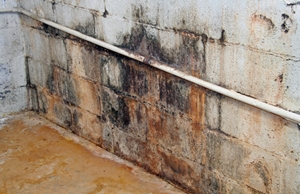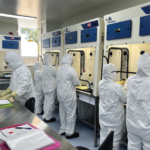Poorly ventilated, damp environments allow mould to thrive, posing a number of health risks to building inhabitants. Therefore, it’s imperative that administrators measure humidity, temperature and other elements that may lead to fungi propagation.
Taking advantage of technology
To account for these factors, many professionals install hygrometers. While these devices are useful, portable alternatives are easy to carry and prove just as capable. Testo’s new line of smart probes, one of which is the testo 605i, enables users to:
- Check ambient air temperature and relative humidity
- Calculate relative humidity and heat levels throughout ductwork
- Measure enthalphy at air handlers
- Check air conditioner dehumidification settings
Testo #humidity instruments are all designed and manufactured to guarantee accurate measurements at all times: https://t.co/KXKBrUuwIG
— Testo Australia (@TestoAustralia) November 30, 2015
One of the key features of the testo 605i is that HVAC technicians and other contractors can easily connect them to their smartphones through Bluetooth. Upon doing so, all the data the smart probe records is sent to the Smart Probes App, where the information is stored for later analysis.
Gathering humidity, temperature and airflow information to detect mould can go a long way in improving a facility’s health and safety standards. To better interpret this data, it’s important technicians and building managers know how mould grows.
An overview of mould
According to Better Health Channel (BHC), mould is a kind of fungi that reproduces by creating spores, which grow in damp regions located indoors. Often, its appearance may trick passerby into thinking its a stain or smudge of some kind. The colour of mould is not static either, and can be black, green, white and orange, among other pigments.
It’s very difficult, if not impossible, to prevent mould from developing.
How does the human body respond to mould? People working or residing in damp buildings may experience nasal congestion, wheezing, respiratory infections and sneezing. Those with asthma or allergies may find that their illnesses become exacerbated in these structures.
Although BHC conceded that it’s very difficult, if not impossible, to prevent mould from developing completely, there are ways to suppress it from growing. As noted above, using indoor climate meters and other instruments to calculate relative humidity, temperature and other factors is the first step in identifying whether a building suffers from a fungus problem.
In addition, it helps to assess potential problem areas. The BHC identified such regions as cupboards and corners that may not receive proper ventilation as well as walls and windows that are exposed to high indoor and low outdoor temperatures.
If you’d like to know which instruments can help you detect mould, contact Testo today.









 Reduce cooking oil costs while ensuring quality
Reduce cooking oil costs while ensuring quality Expert knowledge on CO2 monitoring
Expert knowledge on CO2 monitoring Refrigeration knowledge - in 3 modules
Refrigeration knowledge - in 3 modules



